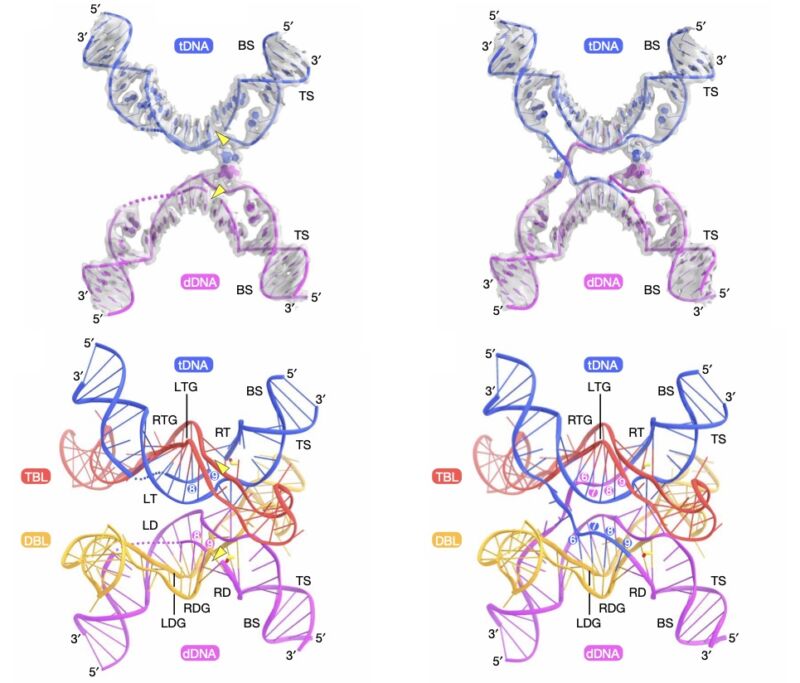DNA-based bacterial parasite uses completely new DNA-editing method

Enlarge / Top row: individual steps in the reaction process. Bottom row: cartoon diagram of the top, showing the position of each DNA and RNA strand. (credit: Hiraizumi, et. al.)
While CRISPR is probably the most prominent gene-editing technology, there are others, some developed before and since. And people have been developing CRISPR variants to perform more specialized functions, like altering specific bases. In all of these cases, researchers are trying to balance a number of competing factors: convenience, flexibility, specificity and precision for the editing, low error rates, and so on.
So, having additional options for editing can be a good thing, enabling new ways of balancing those different needs. On Wednesday, a pair of papers in Nature describe a DNA-based parasite that moves itself around bacterial genomes through a mechanism that hasn't been previously described. It's nowhere near ready for use in humans, but it may have some distinctive features that make it worth further development.
Going mobileMobile genetic elements, commonly called transposons, are quite common in many species-they make up nearly half the sequences in the human genome, for example. They are indeed mobile, showing up in new locations throughout the genome, sometimes by cutting themselves out and hopping to new locations, other times by sending a copy out to a new place in the genome. For any of this to work, they need to have an enzyme that cuts DNA and specifically recognizes the right transposon sequence to insert into the cut.